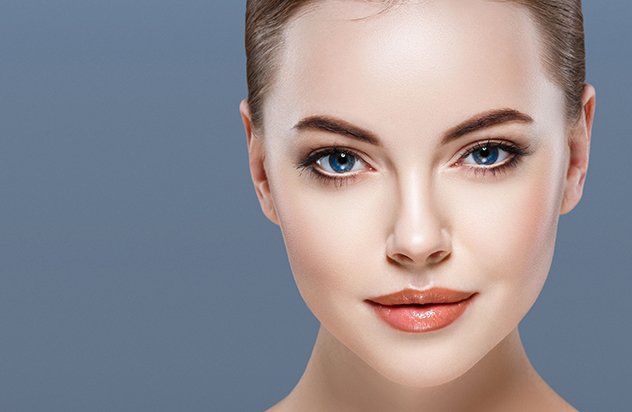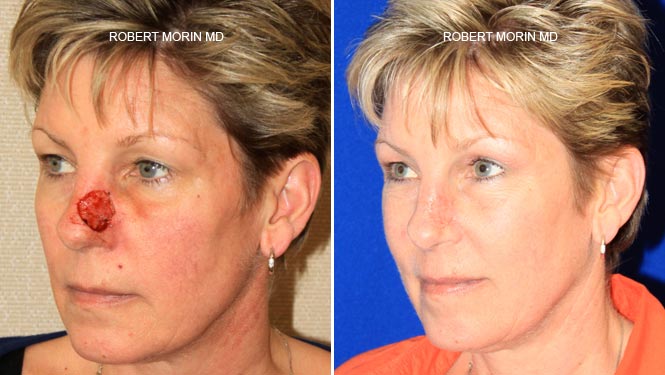
Skin cancer becomes a very common problem as people age. This is especially true if they have spent a significant part of their lives exposed to the sun. Often skin cancer can be successfully treated by removing it surgically. If the cancer is large, however, a significant defect may remain once all the cancerous tissue is removed. Large deformities in places like the face can be emotionally upsetting and aesthetically unpleasing. Fortunately, plastic surgery can be performed to repair these defects by borrowing tissue from other parts of the face and body.
Reconstruction is usually performed on the same day as the cancer removal. The reconstruction can often be performed under local anesthesia in the office setting. The type of reconstruction will depend on the size and location of the defect. The best aesthetic result will always be one of the main goals of any reconstructive procedure.

Laser skin resurfacing removes the outer, damaged layer of skin to permit the emergence of new skin cells in order to reveal a smoother, younger look. Laser resurfacing can reduce the appearance of sun damage, wrinkles, fine lines, uneven pigmentation and superficial scarring. Procedures are usually performed on the face. Procedure times vary depending on both the condition being treated and the laser being used. Lasers are also used to remove many types of tattoos.

*Results may vary
Ready to start looking your best? We offer virtual and in-office consultations.
Dermabrasion removes a layer of superficial skin in order to improve the overall appearance of the skin. This procedure is often performed to smooth out finely wrinkled skin, acne scars, uneven pigmentation, sun damage, and even some skin lesions. After the procedure, it is normal to feel a sensation similar to sunburn for a week, at which time most patients are able to return to work. The newly revealed skin will likely appear pinker than usual for two to three months. During this period, patients must adequately protect their skin from the sunlight.
A chemical peel has the ability to remove the damaged outer layer of skin on the face, hands, neck and chest. Once healed, the result is healthy, glowing skin. The most common and safest type of chemical peel uses trichloroacetic acid (TCA). It can be used in different strengths from mild to strong depending on the condition, desired result, and the patient’s skin type.
A chemical peel can be used to effectively reduce the appearance of wrinkles, age spots, and freckles, as well as to improve skin tone and texture by removing loose, damaged skin. A chemical peel can be combined with surgical procedures like a facelift in order to maximize results.